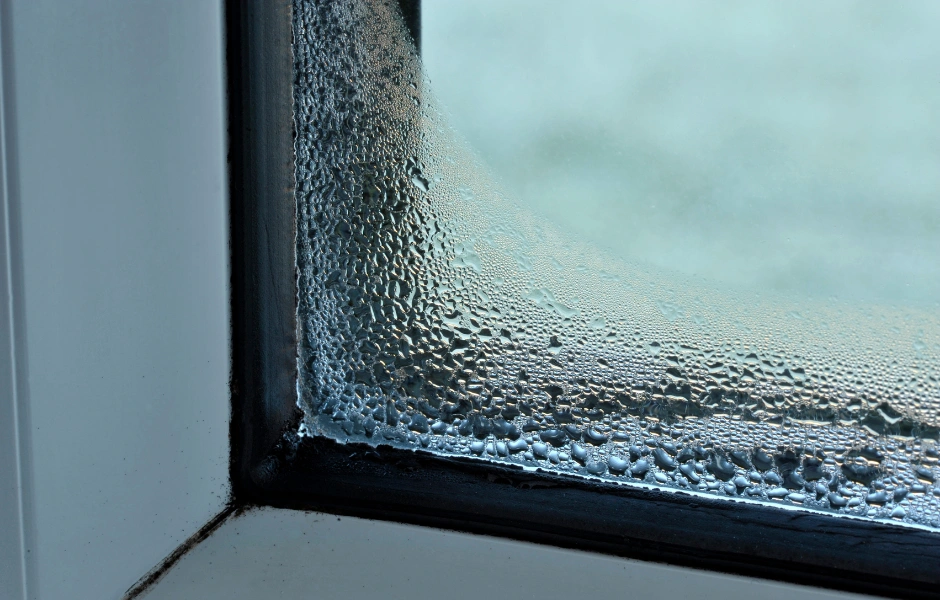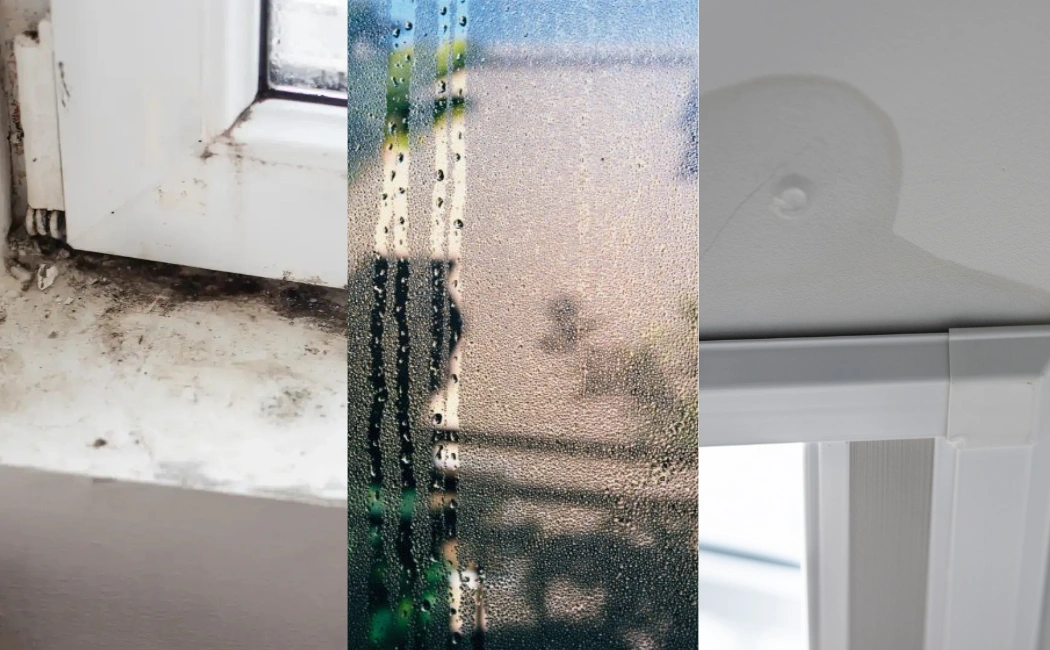Sometimes even the most expensive, premium windows perform worse than old ones. Why? Because they were installed incorrectly.
Improper installation is the number one reason why homeowners notice draughts, leaks, mould, condensation or noise, even when they invested in high-quality joinery. In other words: a window is only as good as the way it was fitted. And that’s exactly where most problems begin.
In this article, we break down the clear signs your windows weren’t properly installed and explain what you can do to fix them. At Fenbro, we cooperate with trusted, independent fitting teams who gave us some valuable insights into their precise, detail-oriented methods, to help homeowners avoid the typical issues seen in many local installations. Let’s dive in – here’s how to tell when something went wrong.
Signs of improperly installed windows
Installation issues can show up immediately… or become visible months or years later. Many homeowners don’t realise anything is wrong until the first draughts, leaks or mould patches appear. To help you stay ahead of these problems, we’ve put together the clearest warning signs, so you know exactly what to pay attention to from day one.
Window air leaks
Feeling cold air coming from around the frame is one of the clearest symptoms of poor installation. Air leaks often appear when the installer doesn’t use mounting foam at all (a common issue in Ireland), applies it unevenly or too thinly, or rushes the external sealing. Gaps left under or above the frame also create airflow paths that reduce the home’s airtightness. As a result, rooms feel colder, energy bills rise, and the issue becomes even more noticeable in older properties where uneven openings require more careful preparation.
Draughty windows
Draughts are a stronger, more consistent airflow than small leaks, and they typically point to serious installation shortcuts. This happens when gaps are covered with plastic trims instead of being properly insulated, when old misaligned frames weren’t removed fully, or when the installer mounted the new window on an uneven surface without creating a correct level. They also appear when internal sills are trimmed instead of replaced and insulated underneath. As Fenbro experienced fitters often say: if the area beneath the sill isn’t insulated properly, draughts will return no matter how good the window itself is.
Condensation on windows
While some condensation is normal, certain patterns clearly indicate installation issues. Condensation caused by poor fitting appears when thermal bridges form around the frame, when the area beneath the sill was left uninsulated, or when an uneven frame puts irregular pressure on the seals. It also occurs if installers don’t clean, prime or moisten the surface before sealing – steps Polish professionals always include. If moisture appears in the corners or around the reveal, it’s typically a sign that the window wasn’t insulated or sealed correctly. You can also check our full article on reducing window condensation.
Window gaps
Visible gaps between the frame and the wall are a strong indicator that the installation lacked precision. This happens when too little foam is used, when installers rely on plastic trims to disguise empty spaces, or when vapour-permeable tapes and expanding tapes are skipped entirely. Gaps may also appear when the opening wasn’t corrected or levelled before fitting the new window. These empty spaces become pathways for cold air, moisture and even rainwater to enter the home.
Water leaking around windows
Water infiltration is one of the most serious signs of improper installation. Stains, peeling paint or damp patches around the reveal usually indicate that the external sealing was applied unevenly or that essential waterproofing materials were not used. Poor-quality foam, missing external vapour-permeable tapes or incorrectly installed sills can all cause water to run toward the wall rather than away from it. According to many experienced installers, this is one of the most common problems in Irish installations, where exterior finishing is frequently rushed or done without proper weather protection.
Crooked windows
A window that sits unevenly, rubs when opening or closing, or feels stiff at the handle is frequently the result of poor levelling. This often happens when fitters don’t use a spirit level or install a new window directly onto an old, misaligned frame without correcting the structure. When this happens, the new window inherits all the flaws of the previous one. Polish professionals always create a new level during installation, but many quick local installations skip this crucial step. Learn more in our guide on Polish vs Irish installation methods.
Window seal failure
When installation is done carelessly, window seals can be damaged from the very beginning. Signs include heat loss, reduced sound insulation, drafts around what appears to be a “new” window, or seals that start pulling away because the frame was not aligned correctly. Seal failure also occurs when installers skip priming or cleaning the reveal before applying foam. This small oversight significantly affects how well the insulation adheres and how long it lasts.
Broken window seals
If moisture becomes trapped inside the glass unit, it’s a clear indicator that the glazing seals have failed. While this can sometimes be a product-related issue, poor installation can easily contribute by placing too much pressure on the glass, mishandling the unit or tightening the frame excessively. Broken glazing seals cannot be repaired on-site. The only solution is replacing the glass unit.
Mould around windows
Mould developing around the window is often a sign of trapped moisture caused by poor sealing or missing insulation. When cold air enters through installation gaps, it creates damp, cold spots where mould can easily grow. Dark patches or musty smells around the frame usually mean the window isn’t airtight and the installation needs attention.
How to fix poorly installed windows
Not sure what to do if your windows seem poorly installed? Start with a few basic checks that can quickly reveal what’s going on. The candle test is the simplest one: place a lit candle or lighter close to the frame and slowly move it around the edges. If the flame flickers or leans in one direction, air is leaking through gaps created during installation. The paper test is just as useful – close the window on a sheet of paper and try to pull it out. If it slides out with little resistance, the sash isn’t sealing properly, which usually means the frame isn’t aligned correctly. Finally, perform a visual inspection: look for visible cracks along the reveal, uneven or cracked silicone, small openings around the frame or any signs of moisture staining the plaster.
Small adjustments may help temporarily, but they won’t fix the root of the problem. Adding a bit of silicone or foam, tightening hinges or smoothing the sealant can buy you some time, but these fixes won’t solve deeper installation mistakes such as poor levelling, crooked frames, uninsulated sills or incomplete sealing.
In most cases, the smart choice is to contact a professional installer who can re-insulate, re-seal or reinstall the frame correctly. And when the damage is significant (especially if water has already penetrated the wall or the glazing seals have failed) a full window replacement will deliver far better comfort, insulation and long-term performance.
Simple checklist to make sure your windows are installed correctly
Now that you understand what poor installation can lead to, we’ve created a quick graphic highlighting the signs you shouldn’t ignore. Take a moment to see if your windows pass this easy check.
Conclusion
Correct installation is just as important as choosing the right windows. Even the best products won’t perform well if fitted poorly. Recognising the warning signs early can save you a lot of trouble, but a professional assessment is always the safest way to restore comfort and efficiency.
If you’re planning to upgrade your windows or want expert guidance before your next project, get in touch with Fenbro. We’ll help you choose high-quality joinery and recommend experienced fitting teams who follow precise, high-standard installation practices. Your home deserves windows that look great and perform even better – let us help you make that happen!
Frequently Asked Questions (FAQ)
What causes poor window installation?
Poor window installation results from skipping essential steps such as proper insulation, using mounting foam, levelling the frame, replacing internal sills or applying correct external sealing. Quick, budget installations often prioritise speed over precision.
What are the most common signs that my windows were installed incorrectly?
Common signs include draughts, air leaks, visible gaps, messy or uneven silicone, difficulty opening or closing the window, crooked alignment and moisture marks around the frame.
Why is rain coming through my window?
Rain enters when external sealing or insulation has failed. Missing vapour-permeable tapes, uneven silicone, uninsulated gaps beneath the sill or incorrect sill inclination are the most common reasons.
Do crooked windows always need replacement?
Not always. Professionals can re-install or adjust a misaligned frame, but if it was mounted onto an old, uneven surface, replacement may be necessary.
Can bad window installation lead to condensation?
Yes. Poor window installation can lead to condensation around the frame. If gaps aren’t insulated properly or the frame isn’t sealed airtight, warm indoor air hits cold surfaces and turns into moisture.




